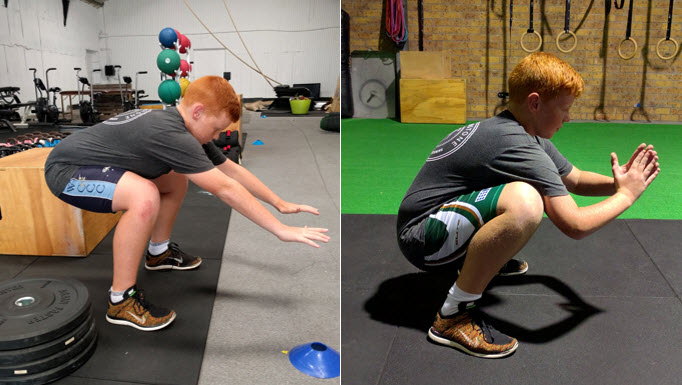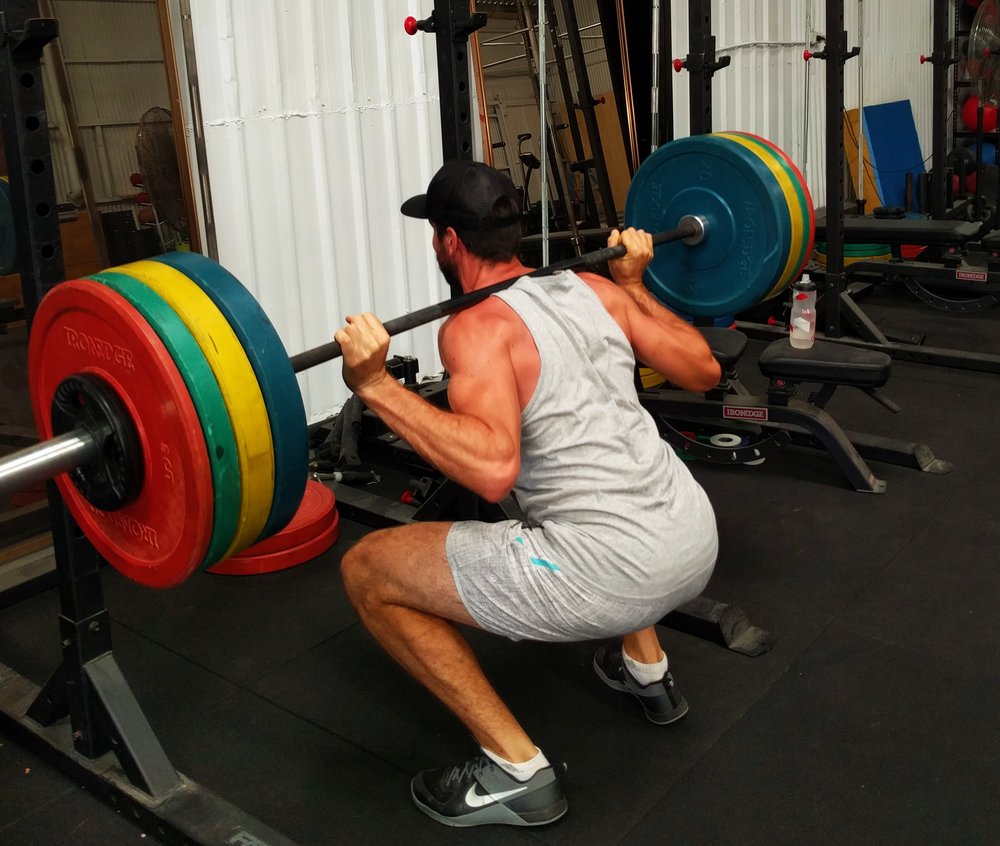The #1 thing athletes, particularly young athletes ask me about is ‘How do I get stronger?’. When I was 15, I wanted to do the same thing (not much has changed). It’s quiet an interesting thing because whether you are a coach, player or parent, most say that strength is an extremely important aspect of their game, however unfortunately almost none seek the right programs, facilities and guidance or make the investment to achieve it. The 2nd thing people ask is about speed. Even my mother knew that I got faster when my legs got stronger. So the 2 are very strongly related.
So what’s required to get stronger? Well let me tell you, the occasional plank circuit after training will NOT cut the mustard. Especially the way 90% of athletes do them. I can almost guarantee if you are 17 or older, you have been going to your local gym for at least 12 months with your mates hitting the bench press, leg press, dumbbell shoulder press, assisted pull-ups, preacher bicep curls, tricep extensions and whatever other random movements the PT gave you in your ‘body building’ program or you see the other ripped dudes at the gym doing.. You then smash your ‘Mass Bulk’ protein shake you got from your local supplement store, head home and pray the gains are coming. That’s what I did on and off for almost a decade, and it pretty much got me no-where. Unfortunately this is still the norm.
One thing you need to realise is you are an athlete, not a body builder. Your biceps wont matter if your glutes are marshmallows. The right movements, with the right load, completed at the right volume, tempo and intensity are all critical elements. Your nutrition is probably even more important, but you still crush your cereal/toast for breaky, sandwhich for lunch, biscuits/chips/muesli bars and whatever mum serves up for dinner and believe you are eating ‘pretty’ healthy.
If any of this sounds familiar, the good news is, I know how you feel, I know you’re trying really hard, and you aren’t beyond help. I’m not saying all this to try and look smart or make you feel crap. I’m saying this because I know there are so many of you out there, the same as what I was, and I want to genuinely help you get better and not waste years of your life at the gym getting nowhere.
The purpose of this blog is really to give you some basic information about what you need to do, but unfortunately its all in the implementation and execution. I’m going to take you from bottom to top of what you need to be doing to get stronger. It’s a long process, so don’t be fooled, but you can also make significant gains in a short space of time with the right tools and execution.

Firstly, the focus needs to be around competence. Creating good movement patterns, body awareness, activation and control are the foundations for all training, and should be the primary focus mostly through body weight movements. Once they can complete all movements and have shown the body awareness, body control, skill and understanding of themselves, they are able to start increasing one or all elements such as loads, complexity of movement, volume, or intensity. This is where we really start building the base to create strong, mobile and powerful movers.

Feet – Your feet are a huge component in everything you do as an athlete. They are what connects you to the ground, so they need to be looked after. Hands up if you have ever rolled your ankle badly (or worse) or had planter fasciitis, severs or osgood schlatters? Your feet are the starting point.
What to do? Massage them with a hard ball.. A LOT. This releases facia, musculature and tension throughout the system. The Chinese were onto something with focusing on feet. Be barefoot as much as possible and hit barefoot calf raises twice a week. Wearing shoes all the time is like putting a cast on your arm. Let them be free and rebuild the strength and muscular in them.
Calves and Shins – This is where we run into problems around growing pains. Essentially your bones are growing faster than your soft tissues can keep up with in a lot of cases. Tall, skinny and no calves. Sound familiar?
What to do – Do the same thing you did for your feet. Smash the hell out of those calves & soleus, and even on the front either side of the shin.. Build the strength with the barefoot calf raises and plyometrics (start light with skipping and build up to more complex jumping).
Quads – Most athletes don’t know how to use their glutes and hamstrings, which places more emphasis on the quads. This is generally the most developed part due to the amount of running and jumping they do. Strong quads are great, but we can be under-developed in our VMO which significantly contributes to knee stability.
What to do – Step ups and single leg squats are your friends here not to mention squatting (both 2-feet and single leg variations). Foam rolling and stretching particularly the hip flexors will make sure those quads are strong and supple.

Hamstrings – How often do you stretch your hamstring? Ever made any gains with it? The stretching you are probably doing now is a complete waste of time. It makes you feel a little bit better, but doesn’t really achieve anything. Want to be able to get further than touching your shoe laces without having to strain and start shaking like a leaf? Two things you need to do are spend more time down there, and do HEAPS more weighted and ballistic stretching. Most of what you experience is a neurological response because you don’t use them, these methods help overcome that. Like everything, if you don’t use it, it gets weak, and most young athletes have weak hamstrings which then leads to strains/tears, not to mention being slow.
What to do – USE THEM MORE! Nordics, harop curls, hamstrings curls etc are essential for injury prevention and building strength for speed. Work on eccentrics, concentrics and isometrics here. Weighted stretching and ballistic stretching are also essential.
Glutes – Ever seen a sprinter with a small ass? The glutes are our powerhouse, and unfortunately most don’t even know to activate them let alone use them. Weak glutes are also a primary cause for back, hamstring and knee problems, so should be a HUGE part of your program.
What to do – Get them fired up with mini-bands and various bridges, then hit the hinging movements such as a deadlift, RDL and any other movement you can think of that uses the glutes. Don’t forget about the lateral and rotational plains. We play multi-directional sports so we need to train that way as well. Keep them supple using trigger balls.
Trunk – This comprises every part of your mid section, not just the front. It is there to stabilise and protect the spine and everything inside. The 6 pack is for the beach, not the field (although body comp etc plays a big role in being an athlete, but that’s a story for another day). Again, the trunk needs to work in all planes. That’s flexion, extension, rotation, anti-rotation and stabilisation under load.
What to do – You are doing core work if you lift, carry or hold just any load, particularly heavy load, so squatting, deadlifting, pressing all fall under this. Add in some rotational and anti-rotation work (bands/cables/balls) with a bit of flexion & extension work (sit-ups/leg raises and supermans) and you will be ticking most of the boxes.
Upper body – This is both front and back. I grouped it together because it all works together and I don’t like training really isolated movements. Upper body is really important for any athlete because there is an element in contact in most sports and you want to be a complete athlete (unless you’re a cyclist) to cope with the demands of the game. It also plays a big role in being able to physically dominate your opponent, but more importantly, feel confident. Why are bicep curls important for a soccer player? Because they make you look good, and if you look good then you feel bloody good, and if you feel good you’re going to go out there with more confidence to perform.
What to do – I don’t really like focusing on one body part once a week. Its about accumulation of volume across the week for me. Think push, pull and rotate in all different planes. Keep your shoulders healthy with banded work, hit the big lifts (bench, press, pull-up, row) and make sure like always, your form is on point. Always balance your pushing and pulling work and make sure you include single arm work as well.
Head – Get your head in the game. This is a big part of becoming an athlete, particularly in the modern game. Don’t neglect it. Do the work and the rewards (injury prevention + performance) will be waiting for you. Most guys once they start a good program love strength training. The chemical release is phenomenal so what it can do for your psychology is just as important as the physical.
Recovery & Nutrition – This is in all honestly probably your biggest limiting factor. Too many simple carbs, not enough complex carbs and vegetables, not enough protein and next to no fat are the common things we see. Poor sleep, poorly hydrated and poor breathing practices are also big limiters.
What to do – If you’re skinny as a rake like I was, you need to eat like its your job and be prepared. Feed your body with foods with high nutritional value (veggies, complex carbs, good fat, quality protein, herbs etc). You need to eat more than you use (energy balance) and ensure you are hydration. Hydration helps cells regeneration and keeps the body functioning optimally. Sleep gives the body a chance to restore from training. If your getting <7hrs as an adult, and <8hrs as a kid, you aren’t getting enough sleep to properly recover from training and you’re wasting all the work you are doing. As for breathing, breath deeply more often and nose breath as much as possible. This is a BIG part of recovery and stress (training is a stressor) management. Check out the research.

Conclusion
I didn’t appreciate the difference becoming stronger would have on my game until after it was too late. If I would have just spent a couple of years following a good program, I would have been 5yrs ahead of where I was physically, which would have changed the game for me. And that’s what I want for you.
If you’re interested in finding out more about strength training for athletes, I will be holding a workshop in WEEK 1 of 2018. During this time, we will go through all things related to strength, movement patterns, mobility, nutrition and becoming a better athlete. This is what I love, and would love to be able to share it more with you. CLICK HERE or below for details.
